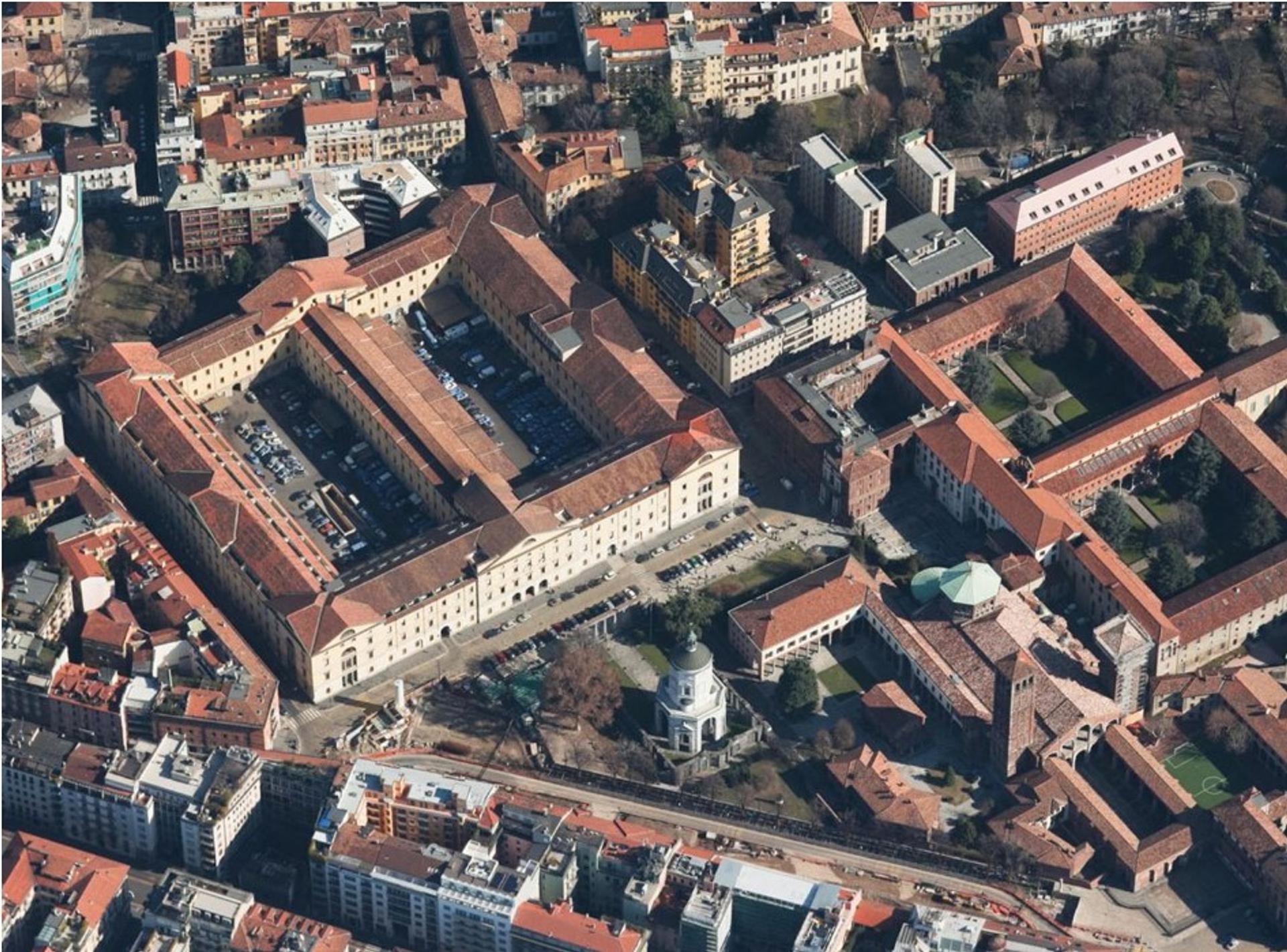
New Campus for Università cattolica di Milano
TRANSFORMATION OF GARIBALDI BARRACK IN UNIVERSITY SEAT
The barracks located in Milano 5, S. Ambrogio sqare, are subjected to Cultural Heritage constraints and at the date are used by the State Police
The whole compound was erected in the 1806-1811 years and is extended over a surface of 130m by 145m with an average elevation of 24.5m above the street level and is composed of four perimetral buildings and of a central one which divides the internal courtyard in two parts.
In general the buildings are developed over three levels and a garret and feature a central corridor bearing on barrel vaults with fanlights and two side room rows originally bearing on wood decks which were substituted by composite steel-concrete elements erected before world war two.
Following an historical document analysis and in situ tests, the seismic vulnerability was investigated and taken as a base for improving the resistance against earthquakes.
The building statics comply with the current requested performances and the Code.
The existing underground parking will be replaced by a new two level building housing the main lecture hall with 700 seats and other large halls (up to 400 seats) thus requiring wide spans and complex construction related to the demolition sequences oand the interaction with the historical structures.
The existing stair cores are to be deepened with very complicated underpinning operations.
Among the techniques which are to be used for the upgradings the following ones are enhanced: replacement of floors keeping in place the existing beams, strengthening of the vaults extrados with an FRCM system 15mm deep, strengthening of masonry walls with a system type CRM, erection of new concrete cores over micropiles.
Aiming at lightness and flexibility of the surface use for wide teaching halls located in the upper floor, the major part of the roofs are reconstructed with steel works.
In some of the roof parts, according to a request from the Monument Superintendence, the existing main wood structures will kept in place, upon restoring and strengthening where necessary.



















